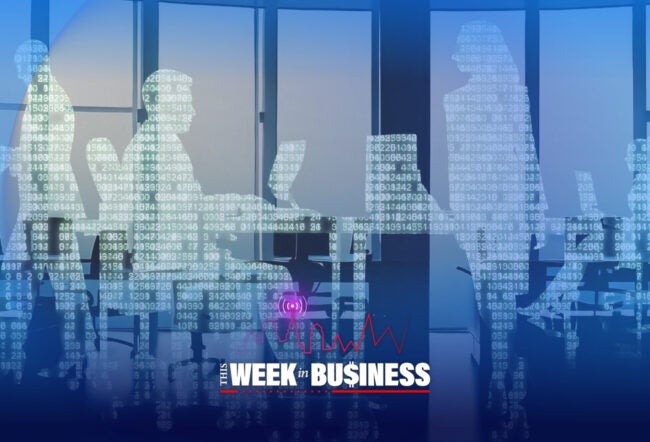In the world of science, the outcome of an experiment is less risky and more predictable when the environment is controlled. The same can be said in the world of business, where organizations germinate and develop in fairly similar ways when their frameworks are stable. But what happens when the environment changes or chaos erupts? That’s the question explored by Luis Rios, a Wharton professor of management, in his paper, “A Date with Destiny: How the Post-IPO Environment Shapes Long-run Innovation Strategy.”
Using a large sample of 1,200 firms at the time they go public, Rios examines how these companies adapt to their environments in order to survive — or ultimately fail. He finds that decisions made in these nascent stages can have a long-lasting impact on the internal structures of a company.
The research is just the beginning for Rios, who says he wants to dig deeper into why firms evolve the way they do. The more firm leaders understand the long-term impact of short-term changes, he says, the better they can manage those transitions to help secure a positive outcome for their companies.
An edited transcript of the conversation appears below.
Bracing for change
I’m interested in the way that firms develop. Specifically, I look at the origin of firm differences within a technological context. The subject of why firms are different has received some attention in the literature, but traditionally people have sort of waved it away. The center view in economics is to control for firm differences and then to look at apples-to-apples comparisons across firms — and that works within that context pretty well. Even within the traditional strategic frameworks, it is very normal to take stock of the firm’s strengths, weaknesses and capabilities and then allow the firm to do an analysis of where it can fit into a competitive landscape. All of that presumes that the firm’s strengths and weaknesses are relatively fixed. But what happens when the environment is changed?
If the activity that your firm is engaged in at any given moment is serving you well and then there’s a radical shift in the environment, the firm might find itself at a loss as to how to react. It turns out that we don’t have a lot of very good frameworks to allow a firm to enact change and to consciously adapt to the new environment. We know that firms can sometimes change. We have observed that and documented it. But we more frequently see firms not being able to change and react, so they flounder and fail. My interest is to try to understand firm evolution from the early stages so that we can see periods during which firms are changing and adapting, then possibly glean some insights into how that can be consciously applied by firms in order to deal with the environmental turbulence that they might be experiencing.
Internal and external forces
In my research, I look at a sample of about 1,200 firms around the time they go public. My hypothesis is that this is a time of radical change for the firms during which they are much more plastic than they would be normally in terms of both the formal and the informal structures. I control for firms that went through the IPO (initial public offering) as planned versus firms that experience a shock that was unexpected around the time of going public. Then I compare to see whether that shock leads to divergent development afterwards. What I find is that, in fact, there’s a very short window of about 18 months around the time when firms go public when they’re particularly susceptible to the environment, so the conditions they experience at that point seem to determine, even 20 years later, the type of firm that they are, and their strengths and their weaknesses in terms of their technological direction.
Some of the key takeaways from the research are that we find that not only do firms develop tastes and preferences, they also seem to be developing what we call “capabilities.” That is, the technological ability to do things differently. For example, the firms that were exposed to non-conducive environments for acquisitions counterbalance that by developing stronger internal research capabilities. That suggests that what is driving this is not so much the top management predilection or preferences for doing one thing versus another, but rather, something that is ingrained at deeper levels of the organization in terms of what the people and the routines and the structures of the firm allow it to do.
“There’s a very short window of about 18 months around the time when firms go public when they’re particularly susceptible to the environment, so the conditions they experience at that point seem to determine, even 20 years later, the type of firm that they are.”
Managing transitions for better outcomes
For businesses, my research might ultimately provide more insight into what they can change, what they cannot change and how. I’ve barely scratched the surface by documenting that short periods of sensitivity can have a lasting effect on what the firm can ultimately do. But for managers, even in the short term, it hints at the importance of being aware of when they’re going through a transition, such as going public, and how that might have unintended effects in disrupting their plans. So, the best-laid business plan up to the IPO may not be what works best going forward, given an unexpected shock.
For managers managing the transition from being a private firm to a pubic firm, they should be more aware about what the environment is like and how that may inadvertently influence decisions that may seem trivial at the time, such as what type of people they’re hiring and what sort of routines they’re developing. Those decisions may end up shifting the direction of the firm in ways that they do not anticipate.
Now, stepping away from the IPO context, I think it’s important to note that there are other disruptive events. Managers should think about whether other disruptions, such as changes in management or mergers, can also be disruptive in a transition. I think that my research suggests that it is important to look at the current environment, which has been a relatively ignored component of what is shaping the firm.
“For managers managing the transition from being a private firm to a pubic firm, they should be more aware about what the environment is like and how that may inadvertently influence decisions that may seem trivial at the time.”
What’s next
The choice of looking at IPOs is a convenient one from a data perspective because there is a very large sample that provides a very clean before and after — situations where we can pinpoint when change was happening. But theoretically, there’s nothing to limit us to saying that the IPO is somehow privileged as a window. There might be mergers, acquisitions , deaths of founders and all sorts of transformative events that may have a similar impact on the firm. I’m extending my research by looking at different conditions that might also precipitate these periods of plasticity in the firm. I’m looking at digging deeper into what precisely is going on within the firm. Doing so will provide more tangible evidence on whether the change is being perpetuated through formal or informal routines or formal or informal relationships, or whether it’s at the top or at the bottom of the organization.



